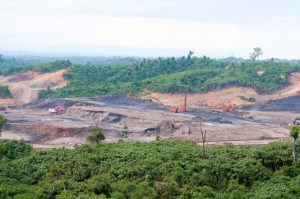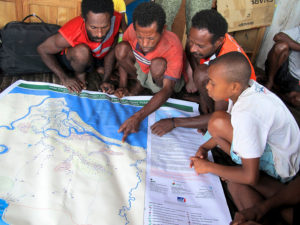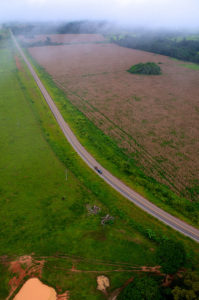Forthcoming event will foster talks between land use competitors
By Kerstin Reisdorf

Wouldn’t it be nice if everyone who lives off the land just got along?
If farmers could grow crops without irreversibly damaging the soil or cutting down forests to grow monocultures?
If conservationists could ensure the biological diversity in the same area?
If the chocolate factory could purchase enough cocoa for the foreseeable future without depleting the natural resources?
And if the government could reach its goals of moving poor people out of poverty?
Well, that wouldn’t be just nice, that would be perfect. So it has to be unrealistic. Maybe for now, but it doesn’t hurt to be aspirational, says Terry Sunderland, Team Leader Sustainable Landscapes and Food Systems at the Center for International Forestry Research (CIFOR).
The picture of the perfect scenario has a lot to do with the CGIAR Research Program on Forests, Trees and Agroforestry and its ongoing research on landscape approaches. He and many other scientists and development experts keep pushing for an integrated landscape approach to land use planning.

A landscape approach aims to reconcile competing interests and negotiate trade-offs instead of dealing with each sector separately. It requires everyone who is involved in land use planning or who uses natural resources or who wants to protect wildlife or who lives off the forest or a farm to negotiate their competing interests and share a collective vision. In theory, this should also lead to more sustainable land use and resource management.
In the light of the complexities of today’s world, sectoral thinking should a thing of the past. According to Sunderland, the practical side of multi-functional landscape models has been lagging behind, so he and his colleagues are increasingly impatient to show how integrated approaches are in fact working on the ground.
Therefore, he is determined to test the move from theory to practice. On 16 November, CIFOR will host a side event at the Programme for the Endorsement of Forest Certification (PEFC) stakeholder dialogue in Bali, Indonesia. The aim is to bring together people from as many land-use sectors as possible, ranging from government to the private sector, conservation and development agencies to local non-governmental organizations to share their experiences, both positive and negative.

“We have to show finally that landscape approaches actually work. And I am optimistic because I see progress,” he says.
He takes his confidence for example from recent experiences at the World Conservation Congress of the International Union for Conservation of Nature, in Hawaii.
“I listened to Asia Pulp and Paper (APP) and APRIL that’s the private sector; to USAID, representing the development sector; to the Indonesian government and the WCS, and Burung Indonesia; that means conservationists.
And they were all talking about the same thing but from their varied perspectives: sustainable landscapes. It’s a huge achievement that there is this dialogue. This would not have been thought possible even five years ago. And, as it turns out: they are very close to coming to a consensus. And that’s the only way it’s going to work,” he explains.
Nevertheless, the move from theory to practice will be a key challenge for CIFOR’s work under the CGIAR Research Program on Forests, Trees and Agroforestry. He thinks this could be feasible because the ten principles of the landscape approach, research that CIFOR led, have been widely accepted as a useful framework to reconcile competing land uses.
For example the USAID-funded “Lestari” project in Indonesia designed to prevent fire and haze through better land-use management did was built on the ten principles as a convening framework.
“In taking the landscape approach into the real world, it will be crucial to integrate the feedback from all land use sectors. The event in Bali will be a step forward in advancing the practical aspects of acting on the landscape principles,” Sunderland says. “This experience sharing and feedback will help ensure that future landscape approaches can draw more and more on experience from the ground.”
Now that would be a great leap forward in moving from theory to practice in operationalizing the landscape approach.
Also read
Integrated Landscape Approaches: A systematic map of the evidence.
Landscape approaches: what are the pre-conditions for success?
Blogs:
The landscape approach, 17,000 papers later – talking ‘bout a revolution
The landscape approach: How did we get here and where do we want to go? Just ask Darwin!
How landscape approaches can achieve the Sustainable Development Goals in three (challenging) steps











